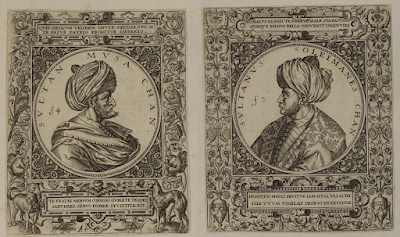Никола Бенин
Mehmed I, Ottoman sultan (r. 1413-1421)
Many would think that the Byzantines and Ottomans were always bitter enemies or if not, Byzantium in its weakened state was always a vassal constantly bullied by the more powerful Ottoman sultan. However, there was a short period of time when both empires were actually at a peaceful co-existence with each other following a period of instability the Ottomans suffered through. This all started in 1402, and here the rather new Ottoman Empire suffered a catastrophic defeat to the powerful Turco-Mongol warlord Timur at the Battle of Ankara with the Ottoman sultan Bayezid I (r. 1389-1402) himself captured. With Bayezid I in captivity in Samarkand where he died in 1403, his empire fell into what was known as the "Ottoman Interregnum", a state of anarchy and civil war among his 4 sons: Mehmed, Isa, Musa, and Suleiman all while the Byzantines were not only saved by this event but they too regained territory they previously lost to the Ottomans which included most of Northern Greece, the city of Thessaloniki, the Black Sea coast up to Bulgaria, and even a portion of Asia Minor all the way to Nicomedia. In Asia Minor meanwhile, Mehmed who was based in Amasya assumed full control of it after defeating his brother Isa who was based in Bursa whereas in Europe, the Ottoman prince Suleiman Celebi gained control of it with the help of the Byzantines. Mehmed however sent his other brother Musa Celebi to attack Suleiman's territory in Europe while Suleiman tried to reclaim Asia Minor. Suleiman when back in the Balkans was at first victorious against Musa in 1410 at the Battle of Kosmidion fought near Constantinople, but after his victory, Suleiman's troops suddenly defected to Musa who later had Suleiman captured and killed. Musa therefore in 1411 laid siege to Constantinople in an act to punish the Byzantine emperor Manuel II Palaiologos (r. 1391-1425) for supporting Suleiman.
In an act of diplomacy, Manuel II knowing of the power struggle between the Ottoman princes asked for assistance from Mehmed Celebi in Asia Minor. Mehmed true enough managed to relieve Constantinople from Musa's siege thus forcing Musa into flight. In 1413, Musa was finally defeated, captured, and then killed at the Battle of Camurlu in Bulgaria by Mehmed's forces assisted by both the Byzantines and Serbians under Despot Stefan Lazarevic (r. 1402-1427). Mehmed I was then crowned as sultan and thus restored order and stability to the Ottoman Empire whereas he too stood on friendly terms with Manuel II of Byzantium as a reward for his support. Throughout Mehmed I's reign (1413-1421), Byzantium and the Ottomans were thus allies and even equals with each other that neither ruler paid tribute to each other, therefore neither was each other's vassal. Mehmed I thus focused on expanding into the Balkans while Manuel busied himself with rebuilding his empire and in scholarly pursuits. Unfortunately, the peace between the empires was not to last as Mehmed I suddenly died in 1421 whereas his son and successor Murad II (r. 1421-1451) was not interested in pursuing peace with Manuel. True enough, when Manuel II and his son and co-emperor John tried to meddle with the succession of the Ottomans, Murad II being enraged at this even laid siege to Constantinople in 1422 but failed.




Няма коментари:
Публикуване на коментар